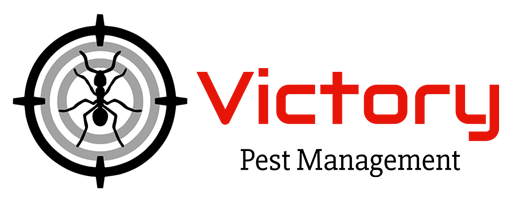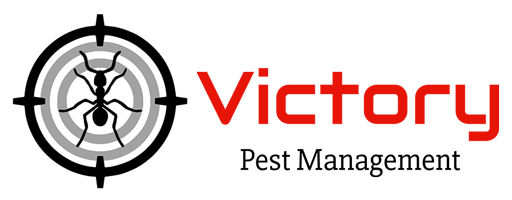Pests That Can Damage Your Home’s Insulation
Protecting Your Insulation: Pests That Threaten Your Home
Insulation is one of the most essential components of any home. It keeps our living spaces comfortable, energy-efficient, and protected from the harshest outdoor conditions. Yet, insulation often goes unnoticed—tucked away in walls, attics, and crawlspaces—until something goes wrong. What many homeowners don’t realize is that their insulation can be a target for pests, which not only compromise its effectiveness but also create long-term problems for the home itself. Understanding the relationship between pests and insulation is crucial to safeguarding both your home’s structure and your peace of mind.
How Pests Target Insulation
The insulation in your home provides more than just thermal protection; it also offers a cozy hiding spot for pests seeking shelter. Rodents, insects, and even birds are often drawn to insulation because of its warmth, texture, and proximity to potential food sources. Once they settle in, pests can cause significant damage by chewing, nesting, or contaminating the material.
Rodents like mice and rats are among the most common culprits. With their strong teeth, they can chew through insulation to create nests, leaving gaps and holes that reduce the material’s ability to regulate temperature. Insects like termites and carpenter ants, while less obvious in their presence, can also wreak havoc, particularly in homes with cellulose or plant-based insulation. Birds, on the other hand, can sometimes find their way into attics and displace insulation as they build nests.
This targeting of insulation isn’t accidental. Pests are opportunistic and instinctively seek out areas that offer warmth, safety, and access to resources. Unfortunately, once pests infest your insulation, the damage doesn’t stay confined to this hidden layer—it often extends to other parts of the home.
The Long-Term Effects Of Pest-Damaged Insulation
The damage pests cause to insulation can have a ripple effect on the rest of your home. When insulation is compromised, it loses its ability to retain heat in winter and cool air in summer, leading to higher energy bills and reduced indoor comfort. Over time, this inefficiency can put additional strain on your HVAC system, shortening its lifespan and increasing maintenance costs.
But the issues don’t stop at energy inefficiency. Pests leave behind droppings, urine, and even dead bodies in the insulation, creating a breeding ground for bacteria, mold, and foul odors. These contaminants can pose serious health risks, especially for individuals with allergies or respiratory issues. Additionally, pest infestations in insulation often signal a larger problem. Once pests find a foothold in one area, they can easily spread to other parts of the home, causing damage to wiring, wood structures, and stored belongings.
Repairing or replacing insulation damaged by pests can be a costly and labor-intensive process, especially if the infestation has gone undetected for a long time. This underscores the importance of proactive measures to protect your insulation before pests have a chance to take hold.
How Pests Gain Access To Your Insulation
To effectively protect your insulation, it’s essential to understand how pests gain access to these hidden spaces in the first place. The most common entry points include gaps around vents, cracks in the foundation, holes in roofing materials, and poorly sealed windows or doors. Even the smallest opening can serve as an invitation for pests, particularly rodents and insects, which are adept at squeezing through tight spaces.
Attics are particularly vulnerable to pest invasions because they often go unchecked for long periods. Birds and bats can enter through damaged eaves or vents, while rodents can climb exterior walls or use overhanging tree branches to gain entry. Crawlspaces, too, are frequent targets, as they provide easy access to the underside of a home where insulation is often exposed.
Once inside, pests are quick to exploit the environment. They burrow, nest, and chew, often unnoticed until the damage is severe. Sealing entry points, trimming back vegetation near the home, and maintaining regular inspections are key strategies for preventing pests from accessing your insulation in the first place.
The Role Of Professional Intervention
While preventive measures are critical, even the most diligent homeowner can face pest issues. When this happens, professional pest management becomes essential. Trained experts have the tools, experience, and knowledge to identify the type of pest causing the problem and implement tailored solutions to address the infestation.
One of the biggest advantages of professional intervention is the ability to locate and eliminate hidden infestations. Pests often burrow deep into insulation, making them difficult to detect with the naked eye. Professionals use specialized equipment to identify these issues and ensure complete removal of pests and their debris.
Beyond addressing the immediate problem, pest management professionals can also provide advice and services to fortify your home against future infestations. This includes sealing vulnerable entry points, installing barriers, and recommending insulation materials that are less attractive to pests. Working with a trusted pest management provider ensures that your home’s insulation remains protected, functional, and free from contamination.
Preventing Future Infestations
The battle against pests doesn’t end with one infestation; it’s an ongoing effort to maintain a pest-free environment. Keeping your insulation safe requires a combination of routine maintenance, regular inspections, and proactive steps to eliminate conditions that attract pests.
Maintaining proper ventilation and humidity levels in your home can help deter pests, as many are drawn to damp or poorly ventilated spaces. Cleaning out attics and crawlspaces regularly removes potential nesting materials and makes these areas less hospitable to pests. Additionally, replacing damaged or outdated insulation with modern, pest-resistant options can provide an extra layer of defense.
Partnering with a pest management professional for routine inspections is one of the most effective ways to stay ahead of infestations. Regular checkups can identify early signs of pest activity, allowing for swift action before the problem escalates. This proactive approach not only protects your insulation but also preserves the overall integrity of your home.
Your insulation is more than just a hidden layer in your home—it’s a critical component of your comfort, energy efficiency, and safety. Protecting it from pests is an investment in the long-term health of your home and family. At Victory Pest Management, we understand the challenges pests pose to insulation and the broader risks they bring to your property.
Our team of experts is dedicated to providing tailored solutions that address your specific needs, from eliminating infestations to implementing preventative strategies. Don’t let pests undermine the comfort and security of your home. Contact Victory Pest Management today and let us help you reclaim your spaces with effective, reliable pest control services. Together, we’ll ensure that your home remains a safe, pest-free sanctuary.



